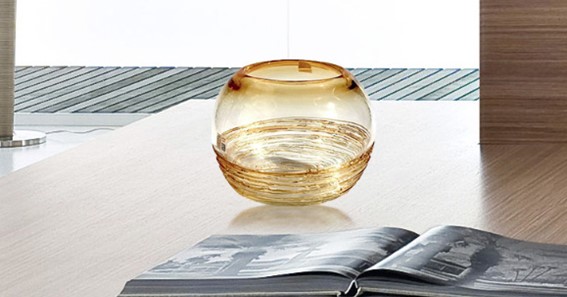Murano glass has a long and rich history that dates back to the 13th century when glassmaking was moved to the island of Murano to prevent the risk of fires in Venice’s overcrowded city. Murano glass quickly became renowned for its beauty and quality, and the glassmakers of Murano developed unique techniques and styles that have been passed down from generation to generation.
Murano glass has been produced on the island of Murano for over 700 years, and it is considered one of Italy’s most important artistic traditions. The glassmakers of Murano were so important to the Venetian Republic that they were granted special privileges, including immunity from prosecution and the right to carry swords. Murano glass became famous for its quality and beauty during the Renaissance period when it was used to create objects for the wealthy elite of Europe.
During the 18th and 19th centuries, Murano glass fell out of fashion, and many glassmakers struggled to survive. However, in the 20th century, there was a resurgence of interest in Murano glass, and many glassmakers began to experiment with new techniques and styles.
Murano glass is an important part of the economy of Venice, and it is estimated that it generates millions of euros in revenue each year. Many glassmakers on Murano are small, family-owned businesses that have been passed down from generation to generation. Murano glass is exported all over the world and is a popular souvenir for tourists visiting Venice. Murano glass is also used by high-end fashion brands, such as Prada and Chanel, to create accessories and jewelry.
Click here – ALL YOU NEED TO KNOW ABOUT TAKING CARE OF YOUR VEGAN SHOES
Murano glass is made using a technique called “lampworking” or “flameworking,” which involves melting glass rods over a flame and shaping them using a variety of tools. Murano glass can also be made using a technique called “glassblowing,” which involves blowing air into a blob of molten glass to create a bubble that can be shaped into a variety of forms. Murano glass can be colored using minerals or metal oxides that are added to the molten glass. Murano glass can also be decorated using a variety of techniques, including “murrine,” which involves layering different colored glass rods to create a pattern, and “filigree,” which involves encasing thin threads of glass in a layer of clear glass.
Overall, Murano glass is highly valued for its beauty, quality, and craftsmanship. Murano glassmakers continue to create exquisite objects using traditional techniques, but they also incorporate new techniques and styles to keep the tradition alive and relevant in the modern world.
The glassmaking industry on Murano has long been intertwined with the politics of Venice. During the height of the Venetian Republic, the glassmakers of Murano were granted special privileges and were considered a crucial part of the city’s economy. However, with the decline of the Republic in the 18th and 19th centuries, the glassmakers’ status and fortunes also declined.
Today, the glassmaking industry on Murano remains an important part of Venice’s economy and cultural heritage, and the local government is dedicated to supporting and preserving this tradition. In recent years, the Venetian government has taken steps to promote and protect the island’s glassmaking industry. For example, the government has established a consortium to protect the Murano trademark, which ensures that only glass produced on the island can be marketed as Murano glass. The government has also invested in the preservation of the island’s historic glassmaking factories and has created incentives to encourage new generations to learn and practice the art of Murano glassmaking.
Click here – How to create Reliable Cash Flow with an Asset Based Business Loan?
However, the glassmaking industry on Murano has also faced political challenges in recent years. The island’s glassmakers have raised concerns about the influx of cheap glass imports from China, which they say are damaging the reputation of Murano glass and threatening their livelihoods. In response, the Venetian government has tightened regulations on the importation of glass into the city and has increased its efforts to promote the unique qualities and value of Murano glass.
In conclusion, the politics surrounding Murano glassmaking have played an important role in the industry’s history and development. While the industry has faced challenges over the centuries, the local government’s efforts to support and promote the art of Murano glassmaking have helped to preserve this cultural treasure for future generations.

